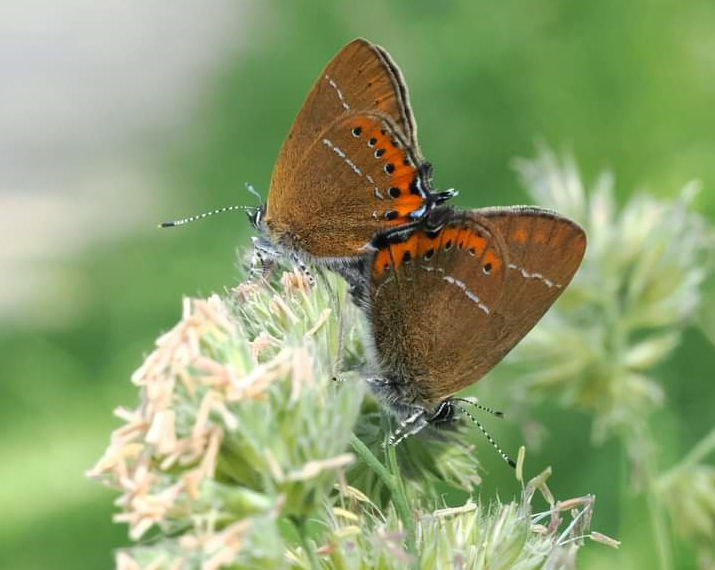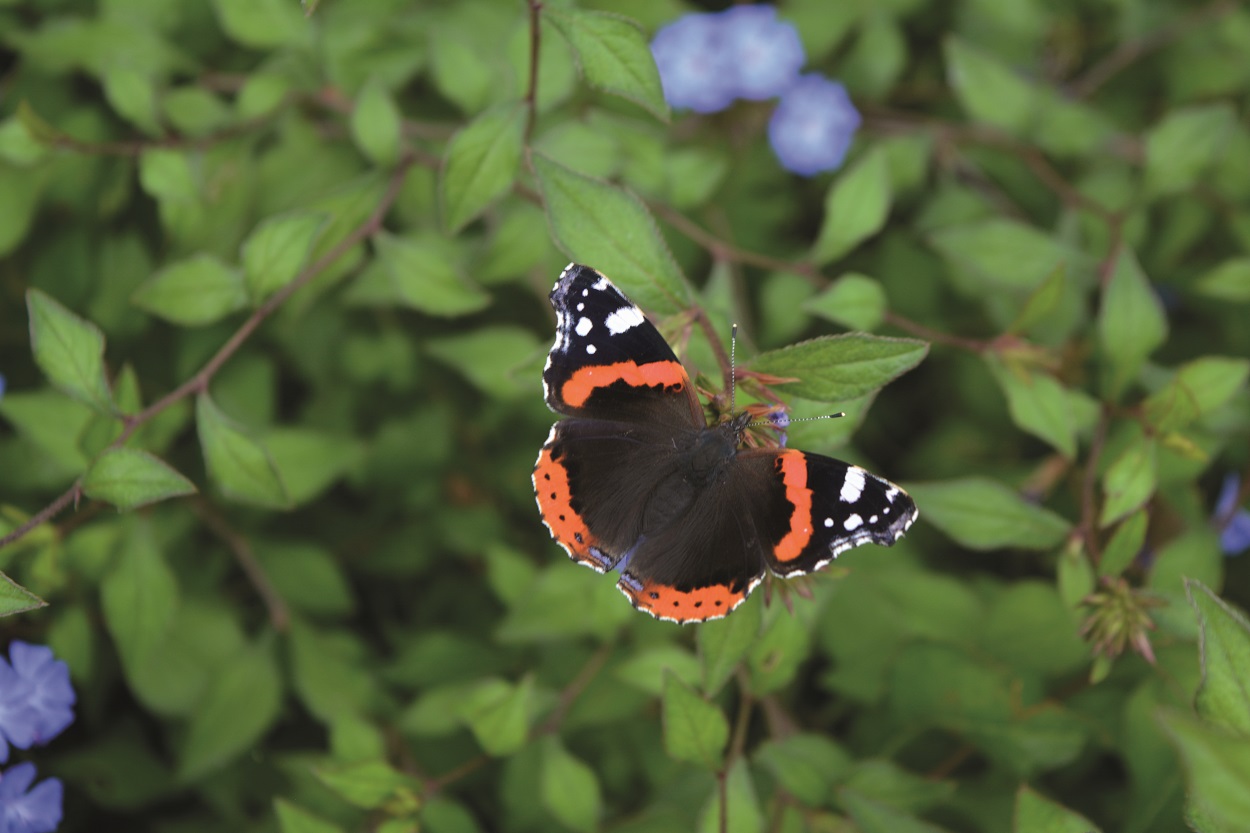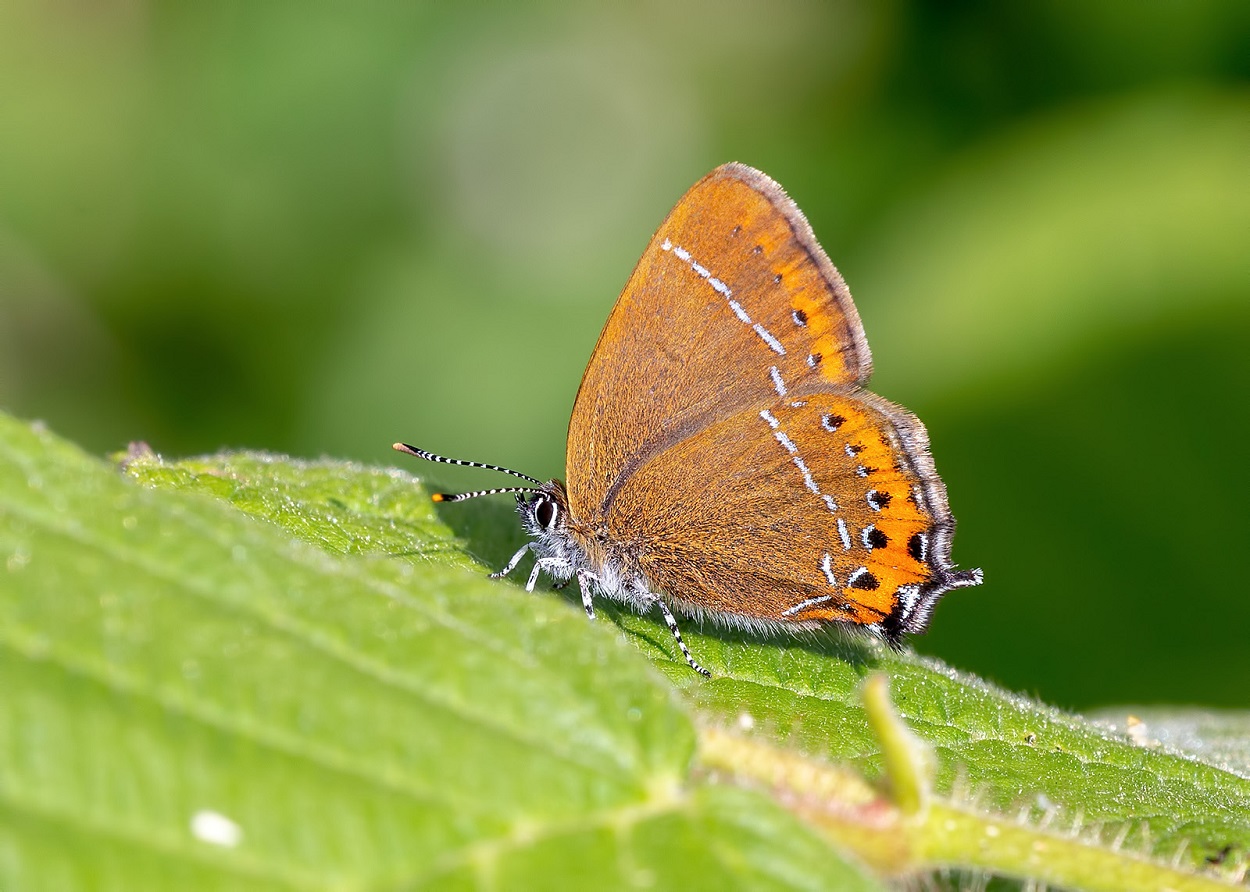Working to beat the decline in butterflies
Posted 29th August 2023
One of summer’s simple little pleasures is when your path crosses with a butterfly as the sun shines, don’t you think? It’s a lovely little interaction and always cheers us.
David Chandler would no doubt agree. He has spent decades working as a volunteer entomologist, and told Pulse’s Sammy Jones that we all have work to do to halt their decline in numbers.
As a youngster in the 1960s David’s interest in butterflies was sparked when he began collecting Brooke Bond Tea Cards. Informative and fun, there was not a computer in sight in those days. Instead, your interest would be piqued by the things you discovered given away free in the boxes of leaf tea.
“I wanted to find the butterflies depicted on the cards for myself and in those days it was much easier than today because they were so much more abundant,” David remembers.
Many of us will recall hazy summer days spent with a net running around the garden in an attempt to catch the delicate flutterers.
David was a little more refined in his efforts: “I used to roam the countryside in my school holidays looking for the butterflies which were easier than birds or mammals to approach and identify. First I made lists but as I grew older I used the early colour cameras which were hard to get a good image with because of the fixed lenses. In my early adulthood I discovered SLR cameras which afforded me much better images.”

While undoubtedly fascinated by the insects, it wasn’t until David attended a Butterfly Conservation lecture in the late 1970s that his interest fired up once more.
As a result of that talk, David joined the Beds & Northants branch of Butterfly Conservation, which saw him connect with like-minded conservationists.
“…I began recording butterflies in the Chilterns in a more scientific way,” he recalled, “I became an expert in grassland butterflies, especially on the chalk, which is what I specialise in today.”
Visit the Beds & Northants Butterfly Conservation website and it issues a stark warning; ‘Our butterflies and moths are disappearing. It’s time to act.’
In less than a century, 97% of wildflower meadows have been lost. It makes for beyond bleak reading, and the loss is catastrophic for the invertebrates, mammals, bats, and birds who made their homes and took their food from the spaces.
In order to build our homes, we are destroying theirs – and butterflies and moths are some of those most impacted.
It is a big problem – and one that we all need to turn our attention to. Butterflies and moths are sensitive indicators of the health of our environment, and their falling numbers should concern us all. As one of the most threatened groups of wildlife in the UK, we all need to play our part to turn the tide on their decline.
One of the easiest ways to make a difference is to join Butterfly Conservation, which will give practical advice, update you on the stats and initiatives happening nationally and in your local area.

“I also became familiar with the butterflies of the ancient deciduous woodlands of North Bedfordshire, at Marston Thrift, and South Northamptonshire in Salcey Forest, and have led public guided walks in these areas for the rarer butterflies like the Black Hairstreak and White Admiral. I have also led habitat work parties in winter to help us conserve these rarer niche species and their diminishing habitats.”
Butterfly Conservation happening locally includes a project to reintroduce the Chequered Skipper into Northamptonshire.
“We are three years into the project and, despite a few weather-related setbacks, it is going well and I am proud of what the branch has achieved which has national importance.”
What is the appeal of butterflies in particular?
“Butterflies appeal to me because they mark the annual cycles of the countryside from the first Orange Tips in spring to the appearance of Chalkhill Blues in July and August marking the beginning of the final weeks of the butterfly flight season. I am a country-boy at heart and I prefer to follow the natural rhythm of the countryside to the use of calendars.”
David, who is now the branch liaison officer, has more than three decades of field experience tucked under his belt.
In 2019, David explored his life with butterflies with the release of his autobiography.
“In it I describe how, in just my lifetime, intensive agriculture, pesticides, habitat loss through industrialisation and urban spread have all added to the fall in the diversity of species of butterflies.”
There are some positives to be taken just now though – for example, the work undertaken by Butterfly Conservation (BC) together with The Wildlife Trust and the National Trust has stabilised populations of the scarcer butterflies.
“…but falling numbers of the more general butterflies in our parks and gardens remain a big concern,” David says,“People comment that the butterfly bush, the buddleia, is no longer covered in butterflies all summer. We all should strive to make our green spaces more butterfly friendly to stem this worrying trend. BC has leaflets on how to garden for butterflies. There is also lots of information on how you can help butterfly conservation in other ways; such as learning the transferable skills in our operations.
“It is the loss of abundance that still drives me to be a volunteer in conservation charity work and a great reason to keep me active in my retirement years as I approach my 70th year.”
And if those stunning little insects were to disappear altogether, then where would we be?
“If we were to lose butterflies in our gardens it would be a very serious signal that our environment was in deep trouble,” David promises, “Not only would we be losing valuable pollinators, indicating an ecological disaster, but we would also lose those little flashes of colour that brighten our days in our little pieces of private space.”
To find out more about Bedfordshire & Northants Butterfly Conservation, visit beds-northants-butterflies.org.uk
